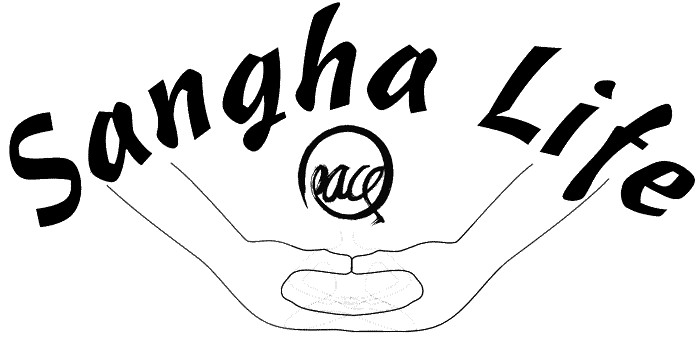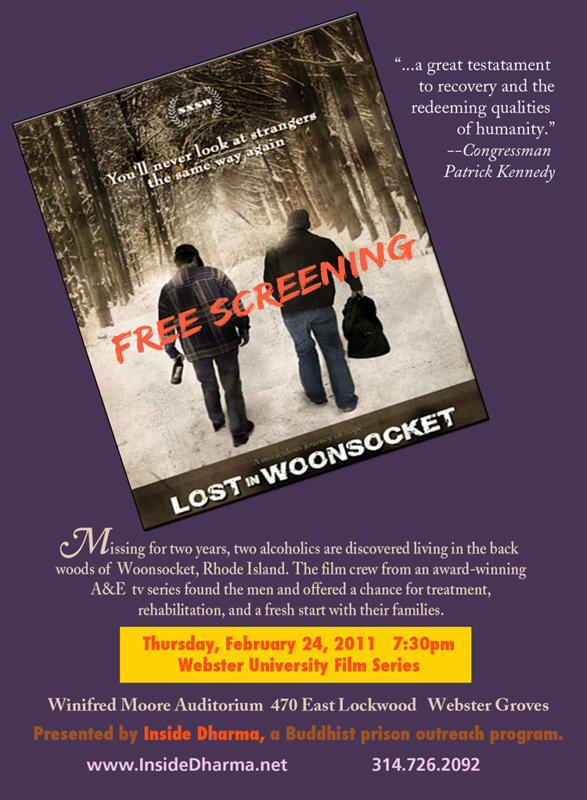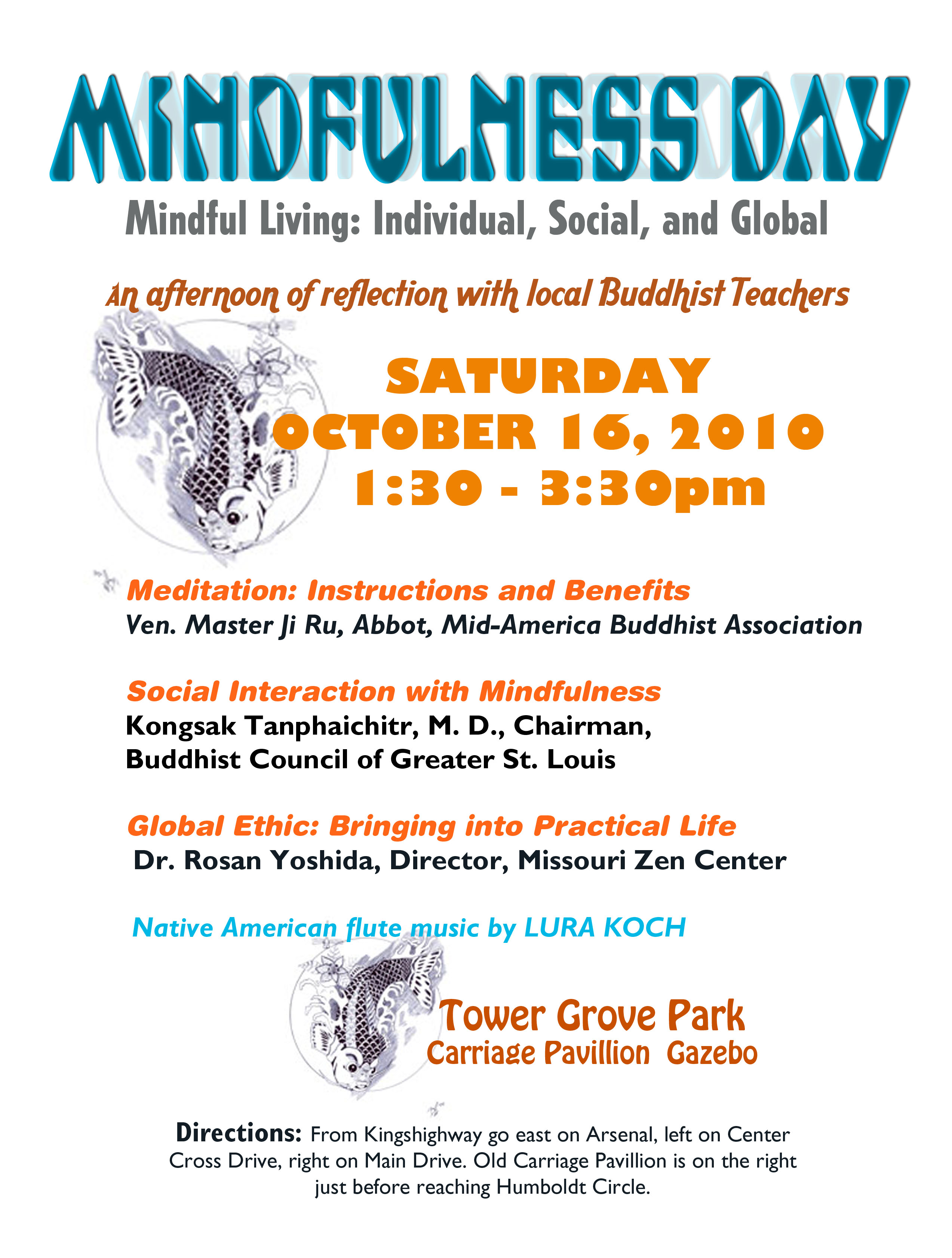

The Missouri Zen Center | February-March, 2011 |
The Missouri Zen Center
220 Spring Avenue
Webster Groves, MO 63119
(314) 961-6138
New Lay OrdaineesOn December 5, 2010, four sangha members took lay ordination. Following the ceremony, Rosan wrote: Congratulations on the ordination of the newly born Bodhisattva-Mahasattvas with our sangha, all buddhas, ancestors and all beings! Erin 恵林: Grace/Wisdom Forest, Rido 利道: Benefitting (the) Way, Shuri 秀理: Supreme Principle/Truth, |
Soho 祖峰: Patriarch Peak, Thank you all participants - ordainees, officiants, helpers, attendees for your dedicated cooperative wonderful work! Help Sew Zafus, Feb. 8 & 15One of the nice services MZC provides to the community is making zafus and zabutons. We have orders to fill and winter is a great time to sew zafus and zabutons together. We have tasks for all sewing skill levels including beginners. Please join us 5 p.m. to 6:45 p.m. Tuesdays, February 8 and 15. |
Page 2 | Sangha Life |
Recipes Wanted for MZC CookbookWe are collecting recipes for a MZC fundraising cookbook. Anyone who has recipes to contribute can put a copy into Kathleen’s mailbox at MZC. If you’d prefer to email your recipe, send it to MZC’s email address. Please consider providing recipes for dishes you’ve brought to sangha potlucks and/or other of your favorite dishes. Submit as many as you like! Zen Teacher Brad Warner
|
Council of Greater St. Louis, of which MZC is a member organization. Schedule: 2:00: Introduction: Leonora Kham For more information, contact Dr. Tanphaichitr: (314) 839-4339 You can look up and print for distribution the “Socially-engaged Buddhism” flier posted on the Buddhist Council website: http://www.buddhistcouncilstl.net/pdffile/Socially_Engaged_Buddhism_3_6_11_flier.pdf MZC Annual Meeting, Mar. 13The Annual Meeting of the Missouri Zen Center will be held at MZC on Sunday, March 13 following family sitting. The meeting will begin with election of new Board members, followed by a sangha meeting. We will meet during and following a potluck lunch. Please bring a vegetarian dish to share. The Annual Meeting is the one meeting each year that our Zen Center must conduct, according to our by-laws. The primary purpose of this meeting is to elect new members to our Board of Directors. Anyone who has paid membership dues or has taken lay ordination at the Zen Center may vote at this meeting. If you don’t fall into either category but you’ve been coming to the Zen Center more or less regularly for some time (meaning we recognize you as part of the sangha), you may also vote at this meeting. The same voting procedures will be followed during the sangha meeting. After the sangha meeting ends, the new Board will meet very briefly for the purpose of naming the officers for 2011. This is the one Board meeting that is required by our by-laws. Please see the article on nominations to the Board for more info on MZC’s Board and its duties. |
February-March, 2011 | A Publication of the Missouri Zen Center |
Page 3 | Sangha Life |
Nominations for MZC Boardby Kuryo MZC’s by-laws require us to hold an election once a year to seat new members on the Board. Board members serve for three years and can be re-elected. Rosan is automatically on the Board as our abbot and Executive Director. Of the current Board members, Kuryo’s term ends after the Board election. Suzanne and Brittany will serve the final year of their |
terms in 2011, and Maku and Erin will serve the second year of their terms in 2011. We welcome new members to the Board so that knowledge of how to keep the Zen Center operational is spread as widely as possible among the sangha. Nominations are now open for new members to the Board and will remain open through Sunday, Mar. 6. We encourage sangha members to consider nominating themselves or another member to the Board. | |
 | A good nominee is someone who has a strong commitment to our practice and to the Zen Center as our place to practice together. Nominations can be submitted to the Zen Center by phone or email. You can also make a nomination by contacting a current Board member. If you nominate someone else, please be sure you have his or her permission to do so. We don’t want anyone to be put in the awkward position of being nominated but not being able to serve on the Board.
|
February-March, 2011 | A Publication of the Missouri Zen Center |
Page 4 | Sangha Life |
E-mail ListSubscribe to our e-mail list at: http://groups.google.com/group/mzclist Once you are signed up, you can send messages to the list using this address: mzclist@googlegroups.com |
Regular Zendo ScheduleSundayYou are welcome to come throughout the morning, but please do not enter the zendo during zazen. Enter quietly at other times. MondayTuesdayWednesdayThursdayFridaySaturdayWork periods may be scheduled following zazen.
| ||
February-March, 2011 | A Publication of the Missouri Zen Center |
Insert Page | Sangha Life |

February-March, 2011 | A Publication of the Missouri Zen Center |
Insert Page | Sangha Life |
by Kuryo
In the last issue, we considered some free or low cost measures to take to reduce your use of heating over the coming heating season and why you might wish to take these actions. The measures we’ll consider this issue are generally easier for homeowners to do than renters, although some renters may find some of them practical as well. The costs run the gamut from rather cheap (caulk, window films, weather-stripping) to quite expensive (insulation, new windows). While all measures will quickly save enough energy to compensate for the energy required to make them, some of the measures will pay back financially quickly (caulk), others not in less than 10-20 years (wall insulation). They will all pay back immediately in terms of reduced discomfort at lower thermostat settings.
A surprising amount of the heated air in a dwelling leaks straight to the outside through gaps and holes. Plugging those gaps is the cheapest and most cost-effective way to reduce your heating cost and fuel use. Look for gaps to seal wherever two or more surfaces meet, such as where your windowframes meet the house or your door contacts the door frame. Caulk and weatherstripping are what you need to seal whatever gaps you find. Many if not most hardware stores carry books that include details on how to apply these materials. It’s likely that your public library has similar books available for checkout. The book Homemade Money, referenced at the end of this article, has a chart comparing different types of caulk. If you’ve sealed most of the leaks, you will notice a decrease in cold drafts, and your feet will thank you, although your heating utility may not.
Some gaps hide in non-obvious places, like the sheet-metal ductwork of a forced-air heating system that leaks heat into an unfinished basement. The best way to find all the gaps, if you can afford it, is to retain the services of a home performance contractor. This will cost you on the order of a few to several hundred or more dollars, depending on the size of the dwelling. In the St. Louis region, you can locate them through the Healthy Planet newspaper (free at various locations around town, including businesses on Big Bend near MZC) or through the Earthways Center portion of the Missouri Botanical Garden’s website (www.mobot.org). If you have the financial resources and you can find a contractor that does the work, you can hire them to seal the gaps that your home performance contractor found. The older your dwelling is, the more leakage it probably has and the faster the payback will be once the leaks are found and sealed (and the more comfortable you will feel in winter).
Your dwelling also leaks warmth through uncovered and single-pane windows. You can cut down on these losses with clinging window films, storm windows, and even just closing the blinds and curtains over your windows at night. If you want to go to a little more effort, some books and websites show you how to make insulated window coverings, or you can look for a vendor who can make them to order.
Adding insulation is what comes to most peoples’ minds when they think about saving energy. Insulating is only cost-effective, however, if it’s done after you seal air leaks. The most cost-effective place to add insulation is in your attic if you don’t already have enough. In the St. Louis area you want to have enough insulation in your attic to achieve an R-44 rating. There are a variety of different materials to choose from when adding insulation to your attic. You’ll want to choose a material which is compatible with any insulation which is now in place and is not hazardous. Blown cellulose is probably the most suitable material for most attics, but more difficult for a do-it-yourselfer to install than fiberglass batts. Homemade Money has good information on the advantages and disadvantages of various insulation materials. Other good places to add insulation are to forced-air ductwork (but only after it’s sealed) and to basement ceilings. Blowing insulation into uninsulated walls is helpful as well but requires a long time for financial payback and is best done by specialists.
If you have a pre-1990 furnace needing to be replaced, by all means replace it with the most energy-efficient model you can afford. Natural gas forced-air furnaces of 96% or better efficiency are readily available. This is an expensive and long-payback item, but if you need to replace the furnace anyway, it’s worth doing.
Probably the last thing to consider for most people is replacing windows. New windows are expensive and require a lot of energy to produce. You’ll find it more cost-effective to caulk and weather-strip around your windows, replace any broken window panes and re-putty any loose ones, and add clinging window film and/or storm windows than to replace your windows. Home rehabbing websites have lots of information on repairing old wooden windows and why you might want to repair them rather than replace them. If you do choose to buy replacement windows, spend however much is needed to get double-pane windows with the longest possible guarantee against leakage. Once they leak, and they will leak eventually, you will have permanent fogging between the two layers of glass.
Homemade Money: How to Save Energy and Dollars in Your Home, by Richard Heede (Rocky Mountain Institute, www.rmi.org, 1995)
February-March, 2011 | A Publication of the Missouri Zen Center |